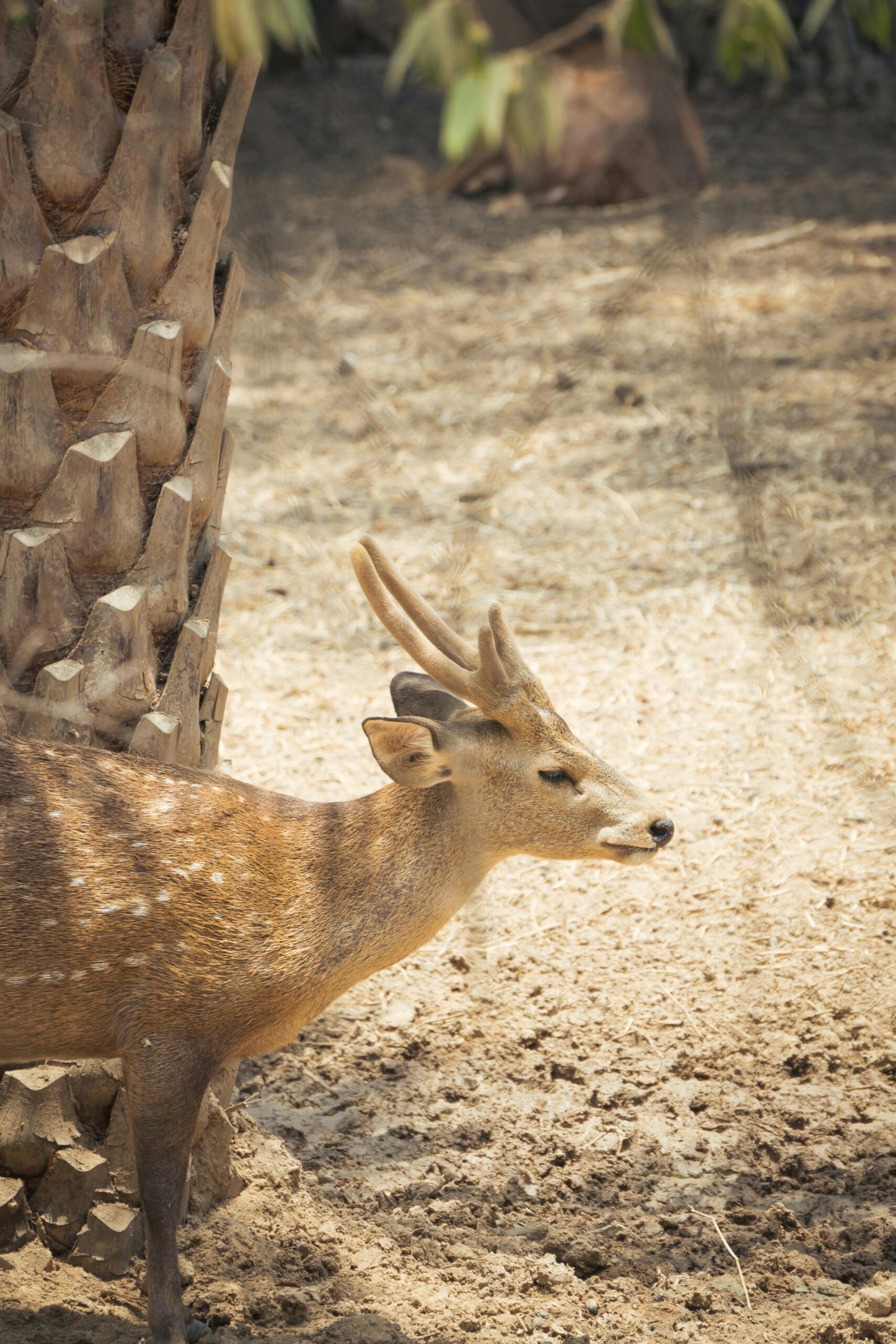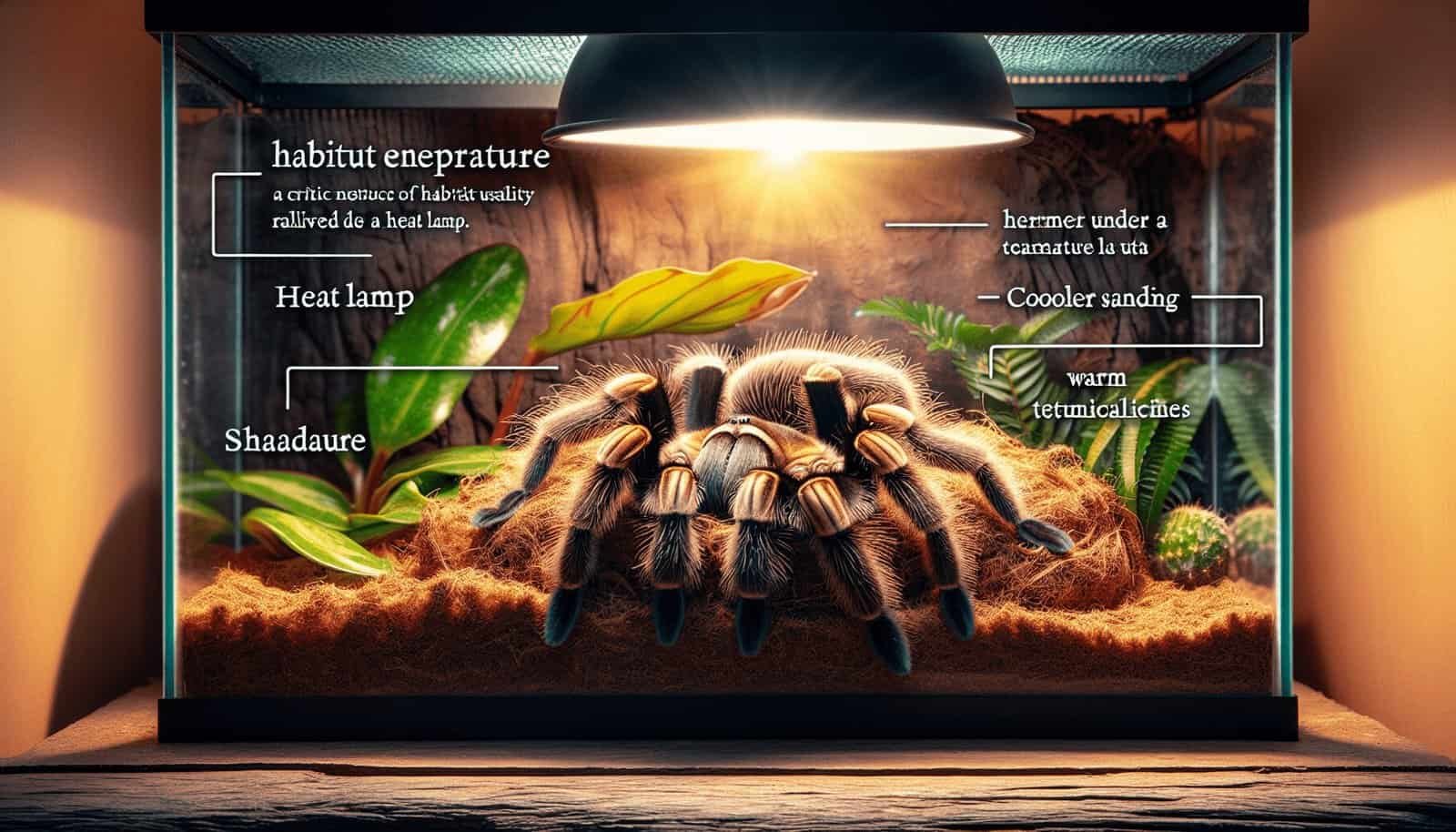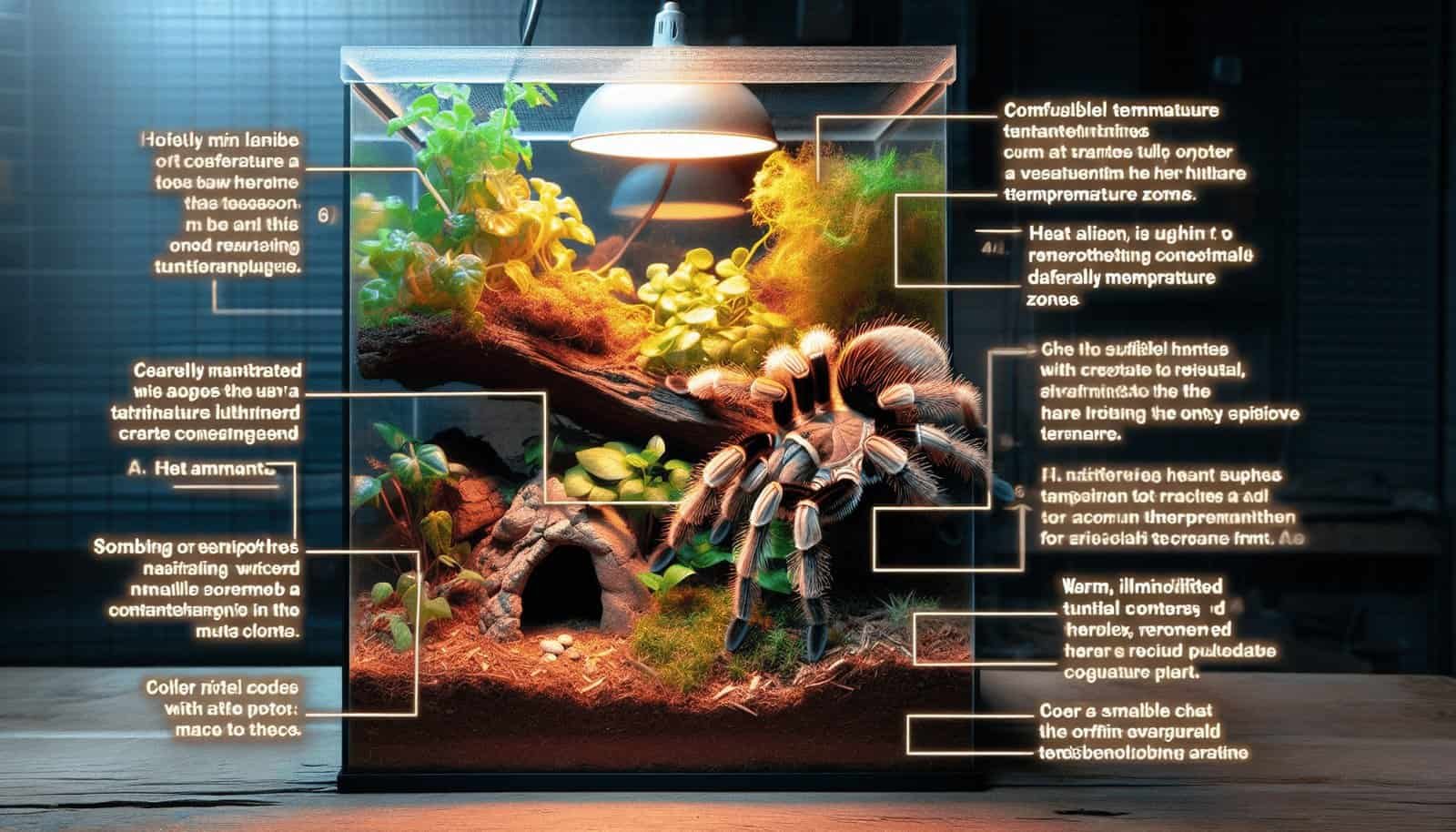Curious about keeping tarantulas with temperature gradients? You’re about to find out! In this article, we delve into whether maintaining varying temperatures within an enclosure benefits your eight-legged friend. Spoiler alert: Tarantulas can indeed thrive in environments with temperature gradients, but it requires careful management to ensure their well-being. From the benefits of mimicking natural habitats to practical tips on setting up the ideal enclosure, you’ll gain insights that will help your tarantula lead a comfortable and healthy life.
Can Tarantulas Be Kept In Enclosures With Temperature Gradients?
Have you ever wondered, “Can tarantulas be kept in enclosures with temperature gradients?” If you’re new to the world of tarantula care or even if you’re an experienced enthusiast, this question might have crossed your mind. Understanding the best habitat conditions for your eight-legged friend is crucial to their health and wellbeing. Let’s dig deeper into this fascinating topic.

Understanding Tarantulas
What Are Tarantulas?
Tarantulas are large, hairy spiders that belong to the family Theraphosidae. They are often intimidating in appearance but are generally known to be more docile compared to other spider species. There are over 900 species of tarantulas, found in a variety of ecosystems ranging from deserts to rainforests.
Natural Habitat and Behavior
Tarantulas are ectothermic, meaning they rely on external conditions to regulate their body temperature. In their native habitats, they are used to fluctuating temperatures. During the day, temperatures might soar, while at night, they might drop considerably. This natural temperature gradient is something that is often considered when setting up a tarantula enclosure.
Setting Up a Tarantula Enclosure
Importance of Temperature Control
Temperature is a crucial factor in providing a healthy environment for your pet tarantula. Improper temperature regulation can lead to health problems such as improper molting, reduced activity, and even death. Therefore, understanding how to maintain a suitable temperature is essential.
What is a Temperature Gradient?
A temperature gradient refers to the gradual change in temperature from one area of the enclosure to another. This mimics the natural temperature variations tarantulas would experience in the wild. It allows them to move freely between warmer and cooler areas, helping them regulate their body temperature more effectively.
| Pros of Temperature Gradients | Cons of Temperature Gradients |
|---|---|
| Mimics natural habitat | Requires precise control |
| Encourages natural behavior | Can be challenging to set up |
| Provides options for tarantula | Extra equipment may be needed |
Achieving a Temperature Gradient
Equipment Needed
Creating a temperature gradient isn’t as complicated as it might seem. Here’s a list of equipment that can help you achieve that:
- Heat Mats or Pads: These can be placed under one side of the enclosure to provide a warm area.
- Thermometers: Digital thermometers with probes can help you monitor temperatures on both the warm and cool sides.
- Thermostats: These are essential for controlling the heat output and maintaining a steady temperature.
- Heat Lamps: If used, these should be placed above the enclosure to provide warmth from above.
Setting Up the Enclosure
To set up a temperature gradient, start by placing a heat source at one end of the enclosure. This could be a heat mat under the substrate or a heat lamp above it. Ensure that the heat source covers only one part of the tank, creating a warm zone, while the opposite end remains cooler.
Monitor the temperatures at both ends of the enclosure using thermometers. Adjust the thermostat to ensure that the warm area remains within the recommended temperature range for your tarantula species, usually between 75°F and 85°F (24°C and 29.5°C). The cooler end should ideally be around 68°F to 75°F (20°C to 24°C).
| Equipment | Purpose | Placement |
|---|---|---|
| Heat Mat | Provides warmth | Under one side of the enclosure |
| Thermometer | Monitors temperature | Both warm and cool sides |
| Thermostat | Controls heat output | Connected to the heat source |
| Heat Lamp | Additional warmth | Above the enclosure |
Species-Specific Requirements
Desert Species
Desert-dwelling species, such as the Arizona Blonde (Aphonopelma chalcodes), naturally experience wide temperature ranges. These tarantulas will benefit significantly from a temperature gradient in their enclosure. Ensure their warm end reaches up to 85°F (29.5°C) while allowing the cooler end to drop as low as 68°F (20°C).
Tropical Species
Species like the Greenbottle Blue (Chromatopelma cyaneopubescens) originate from tropical regions with less drastic temperature changes. These tarantulas will also benefit from a gradient, but the difference between the warm and cool zones doesn’t need to be as pronounced. Aim for a warm side temperature of 80°F (27°C) and a cool side of about 75°F (24°C).
| Species | Recommended Warm End | Recommended Cool End |
|---|---|---|
| Desert | 85°F (29.5°C) | 68°F (20°C) |
| Tropical | 80°F (27°C) | 75°F (24°C) |

Monitoring and Maintenance
Regular Temperature Checks
Maintaining a temperature gradient involves regular monitoring. It’s advisable to check the temperatures at least once a day to ensure they are within the recommended ranges. Digital thermometers with probes are highly recommended as they provide continuous data.
Adjusting as Needed
Over time, the ambient room temperature might change, affecting the enclosure’s temperature gradient. Be prepared to adjust the heat sources or thermostat settings accordingly. For instance, during winter, you may need to increase the heat output, while in summer, you might need to reduce it.
Ensuring Humidity Levels
While focusing on temperature, don’t overlook humidity. Different species have specific humidity requirements that need to be met along with the temperature gradient. Use a hygrometer to monitor humidity levels within the enclosure, adjusting as necessary through misting or ventilation.
Potential Challenges and Solutions
Uneven Heating
One common issue is uneven heating, where hot spots or cold spots develop within the enclosure. To address this, you might need to reposition the heat source or add additional heat mats to ensure an even gradient.
Equipment Failure
Heat mats, thermostats, and other electronic devices are prone to malfunction over time. Regularly check all your equipment to ensure it is functioning properly. Having backup equipment on hand can save you in emergency situations.
Dealing with Seasonal Changes
Seasonal changes can significantly impact the ambient temperature in your home, which in turn affects the tarantula enclosure. During winter, consider insulating the enclosure to retain heat. Conversely, during summer, ensure good ventilation to prevent overheating.

Benefits of Temperature Gradients
Natural Behavior Encouragement
Providing a temperature gradient closely mimics the tarantula’s natural habitat. This encourages natural behaviors such as burrowing, web-spinning, and more. Your tarantula is more likely to thrive in an environment that closely resembles its natural conditions.
Health and Wellbeing
A well-maintained temperature gradient helps in the overall health and wellbeing of your tarantula. It ensures proper molting, digestion, and activity levels. Conversely, a lack of appropriate temperature regulation can lead to stress, illness, or even death.
Flexibility
With a temperature gradient, your tarantula has the flexibility to move between warmer and cooler areas, depending on its needs at any given moment. This autonomy is vital for their comfort and health.
Expert Opinions and Studies
Tarantula Experts
Many experienced tarantula keepers and breeders advocate for the use of temperature gradients. They argue that it aligns closely with natural conditions, which can lead to better overall health and longevity for the tarantula.
Scientific Studies
Studies have shown that ectothermic animals like tarantulas benefit significantly from environments that allow them to regulate their body temperature. Research has indicated that providing a temperature gradient can reduce stress and improve physiological functions.

Common Myths and Misconceptions
Myth: Tarantulas Need Consistent High Temperatures
One common misconception is that tarantulas need a consistently high temperature to thrive. While they do need a warm area, they also require cooler zones to regulate their body temperature effectively.
Myth: Heat Mats are Dangerous
Another myth is that heat mats are inherently dangerous for tarantulas. When used correctly with appropriate thermostats, heat mats are a safe and effective way to provide necessary warmth.
Myth: Temperature Gradients are Complicated
Setting up a temperature gradient might seem complicated, but with the right equipment and a little bit of effort, it can be straightforward. The benefits far outweigh the initial setup challenges.
Conclusion
So, can tarantulas be kept in enclosures with temperature gradients? Absolutely! Providing a temperature gradient is not only feasible but highly beneficial for the health and wellbeing of your tarantula. By mimicking their natural habitat, you encourage natural behaviors, ensure proper physiological functions, and create a more comfortable and enriching environment for your eight-legged friend.
Whether you’re a novice tarantula keeper or a seasoned enthusiast, understanding the importance of temperature gradients can significantly improve your ability to care for these fascinating creatures. With the right equipment, regular monitoring, and occasional adjustments, you can create an enclosure that meets all your tarantula’s needs and allows them to thrive. After all, a happy tarantula is a healthy tarantula!
